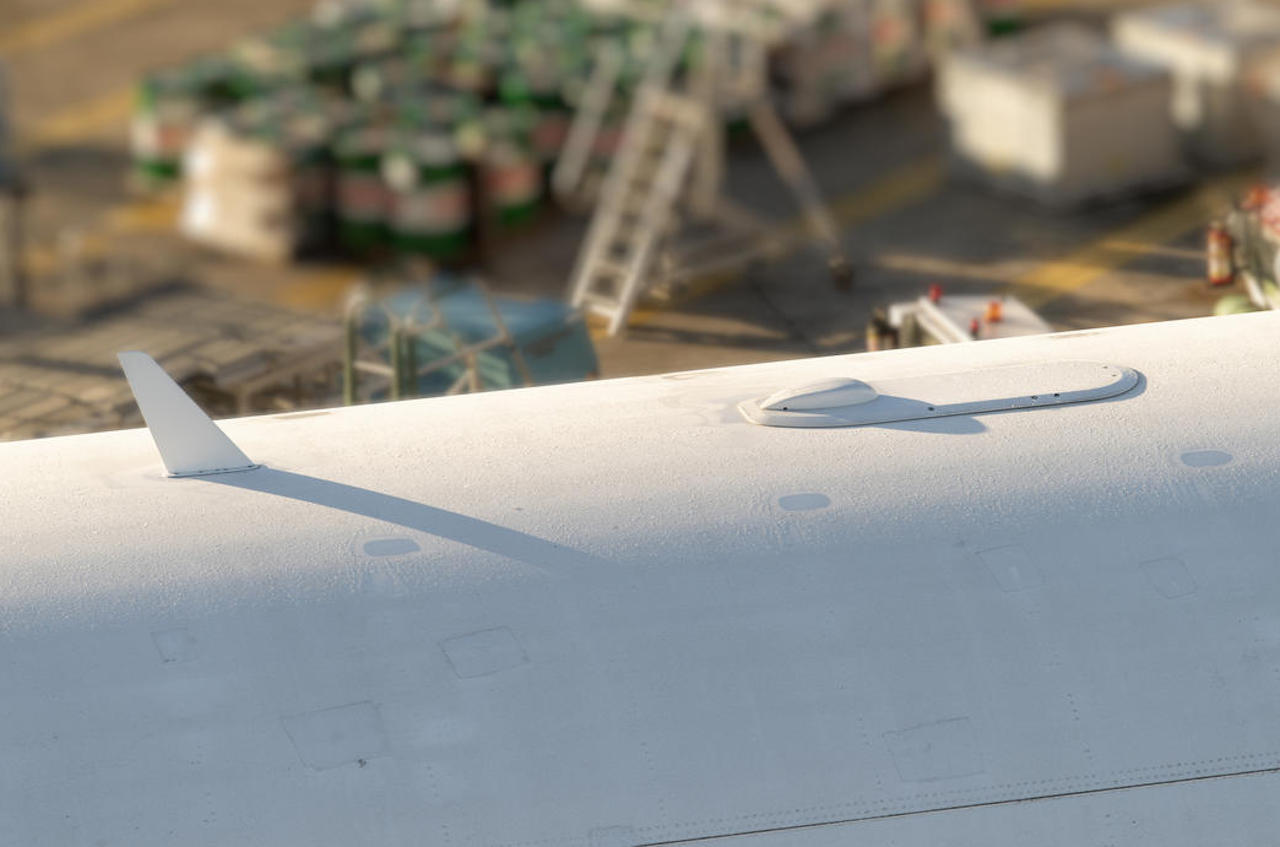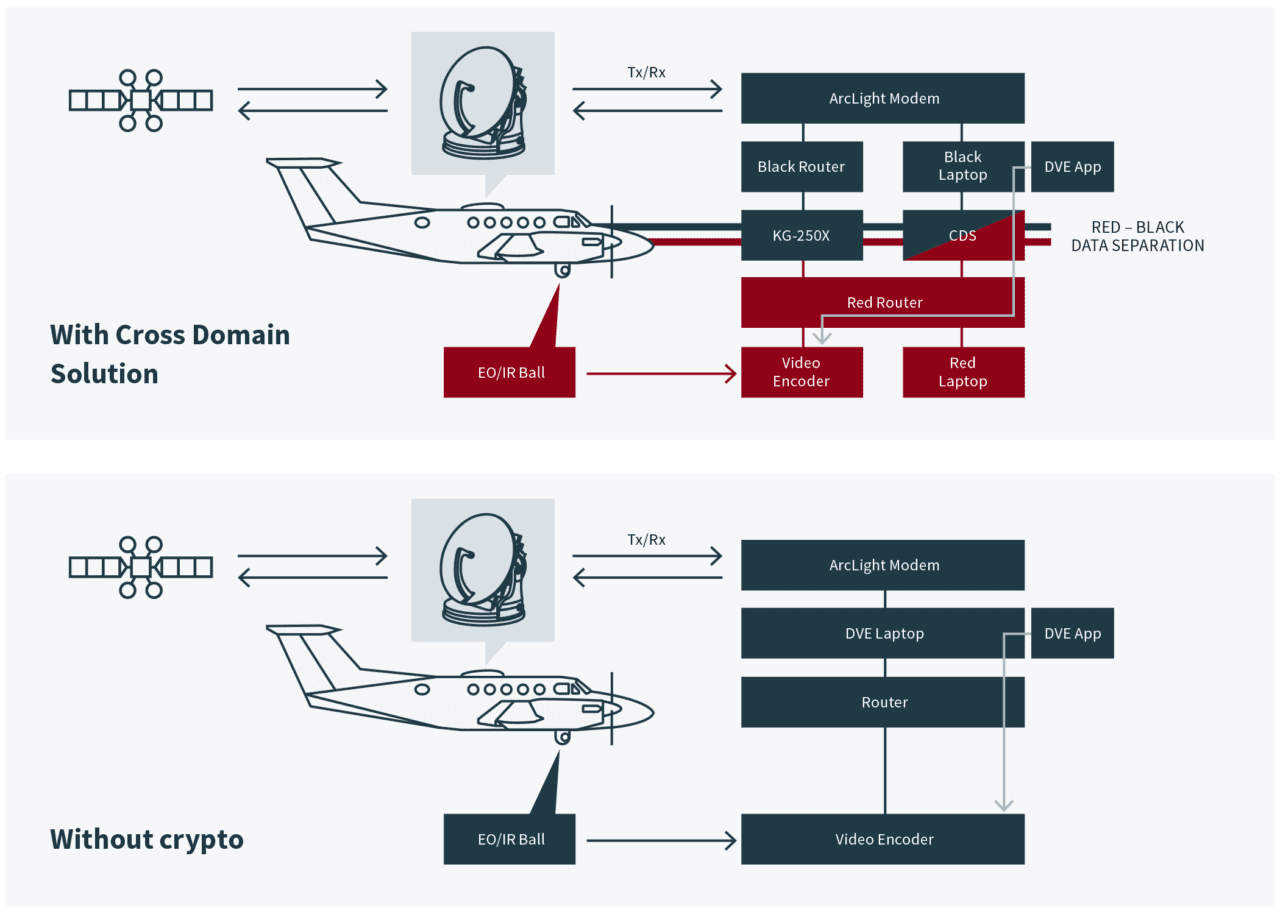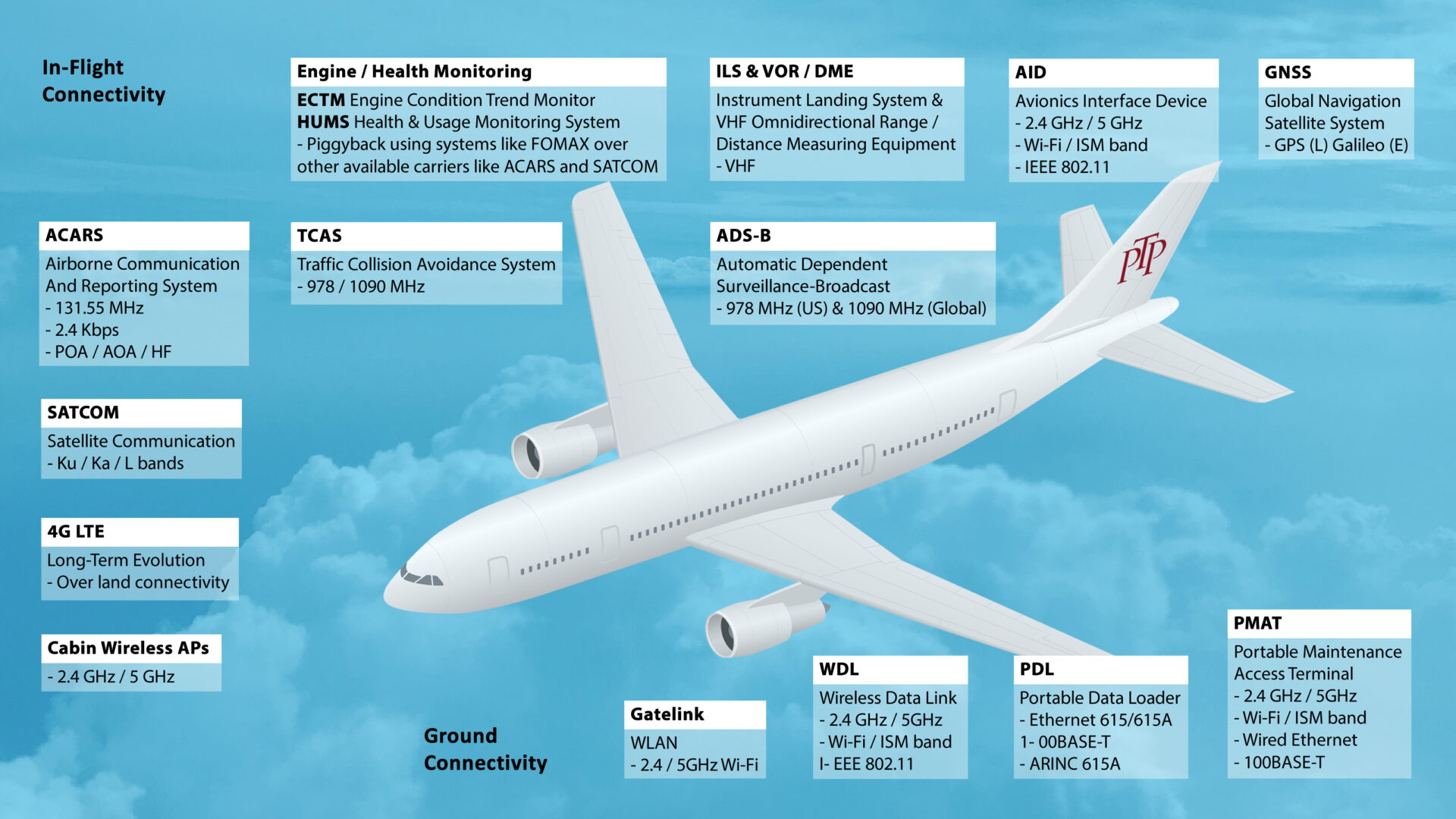Aircraft Satcom Systems - The cost of using this equipment is high and the purchase price can be upwards of $50,000 US and in most cases upwards of $100,000 US including antennas. A high price but you have access to broadband data from pretty much anywhere – the only limitations being at the Poles.
This equipment requires a significant installation investment and is installed under a STC. Passenger Information and Entertainment Services Domain (PIESD) encompasses all passenger services, mostly known as IFE (In-Flight Entertainment) and includes video streaming, passenger internet and intranet browsing, access to social media... This domain is today handled by cabin SATCOM
Aircraft Satcom Systems

(average throughput 20/30 Mbps) but cockpit SATCOM with cabin capability can fulfill it (throughput <1 Mbps) for basic needs and/or as a backup for cabin SATCOM means. In addition, EUROCONTROL is a key player in the coordination with the ESA Iris program, which aims at validating a satellite-based air traffic services datalink using SATCOM Class B and paving the way for evolution to Class A. Iris takes advantage of IP-based
How To Operate Lcs
broadband to provide secure and high-bandwidth cockpit communications for exchanging flight information and trajectory data with the ground for oceanic as well as continental communications. The crew can also use the SATCOM to contact the AOC regarding, for example, an HF system fault message alert during the flight which could affect the next flight dispatch.
This enables maintenance teams to be ready to check the fault on arrival and minimize delay. Communicating while aloft should be as straightforward as it is on the ground. Our offerings make on-board communications simple and easy to manage, with solutions built for any size aircraft performing any mission, with any service provider.
At the time of writing this equipment uses geostationary satellite networks and large high-gain antennas, however in the future this capability will also be provided by Iridium Communications at a lower price-point. It may even use its own terrestrial based network – such as services offered by Gogo, SmartSky and AirSky.
Other manufacturers of operational equipment for this market include Rockwell Collins and Honeywell. The LCS offers a light and efficient SATCOM solution. Beyond standard SATCOM voice and datalink usage, the LCS will unlock the use of new connected applications such as Mission+ from NAVBLUE (an Airbus subsidiary).

Airlines will have new means to optimize their operations. Typical users of this equipment are private owners, tourism/charter operators, and some first-responders. They typically fly small fixed wing and single engine aircraft and helicopters. Well-known providers of this equipment are SpiderTracks, Blue Sky Networks, Guardian Mobility, and TracPlus Global.
Installation is cheap and there are no installation certification requirements for this type of equipment. Today, satellite constellation technology enables more throughput, taking into account regulatory requirements and the growing number of customers. However, while airlines need and expect more connected IP-based applications, it is fundamental to ensure aircraft systems remain protected.
All cockpit communications to/from aircraft are routed through Satellite Service Providers (SSP) infrastructures (Satellite, Gateway/GES). Today two SSP are recognized to be used by commercial aviation to exchange aircraft cockpit data with ground users: Inmarsat and Iridium.
Since the early stages of commercial aviation, and in order to enhance safety, regulations have required long-range communication means for flying over oceanic and remote areas. Initially performed exclusively with HF voice communication, the cockpit SATCOM which operates in the L-band radio frequency is now recognized as an alternative means of communication with the ATC (Air Traffic Control) or AOC (Airline Operation Center).
For continental areas such as Europe, VHF is mainly used thanks to a widely deployed, but increasingly congested, VHF ground network. Flight crew can operate and control LCS with the new radio control means RMP (Radio Management Panel, cf FAST article Cockpit communication - new-generation audio system) or with the legacy MCDU (Multipurpose Control and Display Unit) and ACP (Audio Control Panel)
, according to aircraft configuration. In the FCI context, SATCOM, together with the terrestrial communication systems, will enable the future SATCOM concepts supporting IPS communications and Performance Class A, which are being developed in the context of the SESAR, NextGen and CARATS ATM modernization programs.

The focus in SESAR is primarily on safety of life communications and also in Airline Operational Control (AOC) SATCOM communications, as both are allowed to operate in the same frequency bands under the AMS(R)S ITU frequency allocation.
Pricing is around the $1,500 - $3,000 US mark with additional operational costs for the tracking service in the vicinity of $50 - $150 US/month. Some manufacturers also have a built-in cellular network option that complements the satellite technology.
The cellular option is a cost-saving measure and used when in-range of cellular networks. During the development phase of the LCS, flight tests were conducted on several Airbus aircraft types. More than 70 hours of dedicated flight were performed.
The objective was mainly to check the correct behavior of the SATCOM interconnected to the avionics, ensure there was no interference with other Communication/Navigation/Surveillance systems, evaluate the end-to-end connectivity performance through satellite space and also the ground segment during all
phases of flight and all flight envelope of the aircraft. Flight crew workload and Human Machine interface were also evaluated. This equipment is typically used by first responder aircraft and the military and manufacturers include, Blue Sky Networks, Flightcell, Honeywell and Latitude/SkyTrac.
A typical installation will take 2-3 days and will be installed under a Supplementary Type Certificate (STC) or an engineering modification. At EUROCONTROL, we support the technical, operational and standardization activities in SESAR2020 Wave 2 PJ.14 Solution 107 "Future Satellite Communications Datalink".

In particular, EUROCONTROL is an active contributor to ICAO Working Groups in the update of the SATCOM standards (SARPs and Manual) to include provisions for the future SATCOM systems, meeting SATCOM Performance Class B and in the future SATCOM Performance Class A systems supporting ATS Baseline
2 (B2) and B3 service requirements. EUROCONTROL is also a participant in EUROCAE WG-82 activities aiming to develop ATN/IPS and Voice over IP capability for future SATCOM. Exchanges with ATC are essential to prevent collisions, ensure and optimize the traffic in controlled airspace.
Aircraft automatically report their position (ADS-C) and also exchange data via pre-formatted messages (CPDLC) to allow controllers to safely guide aircraft to their destination (routine operations). Both functions are part of FANS application (FANS 1/A in oceanic and remote areas).
Flight crew can contact or be contacted by ground control by voice means (SATVOICE function) in distress, emergency or flight safety situations (non-routine operation). Such communication exchanges supporting safe operation of aircraft are part of the "Aircraft Control Domain" (ACD).
These critical communications must demonstrate minimum end-to-end performance known as PBCS (Performance-Based Communication and Surveillance). PBCS defines a minimum performance to allow an aircraft to use optimized routes (therefore allowing fuel savings). Passengers and flight crews can enjoy the luxuries of high-speed data connectivity powered by our global satellite communications.
From the sky to the ground, our communication platforms are deployed worldwide in all types of aircraft so people can stay in touch. In some cases, cellular technology supplements the satellite technology, providing operational cost benefits and broadband data for email and internet access.

Pricing is around the $10,000 - $20,000 US mark including antennas. The upper end of this price bracket includes add-on's that include WiFi and Bluetooth™ connectivity for smart devices, or Iridium Push-To-Talk (PTT). There are additional operating costs for tracking and voice services, and they are at a similar price point to the basic tracking devices above.
There may be additional costs for satellite voice calls, but cellular calling costs are negligible. Satellite communications (SATCOM) are already today an important component of aeronautical communications, in particular for the oceanic airspace. In the future, SATCOM is expected to be equally important also for the continental airspace and become an integral part in the Future Communications Infrastructure (FCI).
In addition, evolving satellite constellations provide new SATCOM systems offering new capabilities to meet the current and future aviation communication needs. High Capacity Multi-Systems This grade provides high-end satellite equipment for high-capacity voice and high-capacity data.
There are many voice and data channels and they are accessible to multiple onboard devices. This system is typically installed in the avionics bay of a wide-body passenger jet or a business jet. Some dual-engine operational helicopters use this equipment, however that is the exception and not the norm.
Jim FAWCETT, Lead Flight Test Engineer and specialist in communications systems describes the experience: "We operated our flight test aircraft throughout the entire flight domain to ensure good SATCOM coverage even in case of manoeuvring. To ensure good geographical coverage and correct voice and data service behavior at satellite handover boundaries, we even operated our A350 on a 12-hour flight from Toulouse in France to Gander in Canada and back, without landing!
Our crew found the HMI (Human Machine Interface) intuitive and easy to use. The system behaved well and should provide a secure solution for our customers in the years ahead. Typically, thanks to the EFB (Electronic Flight Bag) live weather forecast application, the crew on a transatlantic flight can detect an unexpected approaching storm cell with potential turbulence as a complement to the onboard weather radar.

They can then call the ATC using the satellite communication system to get clearance to change the flight plan. The next Inmarsat LCS evolution under development is FANS C over SATCOM (FAST article FANS C - on page 34).
This future capability will enable the use of SATCOM for ATC datalink communications over ATN (Aeronautical Telecommunication Network). It will provide an alternative means to alleviate the European VHF datalink network, expected to be saturated in the near future, especially in high density areas, mitigating the risks of quality degradation of datalink services for ATC and AOC.
FANS C over SATCOM will enter service on A320 and A330 aircraft families and will be capable of 4D Trajectory Based Operations (new mandate from 2028). Exchanges with AOC allow airlines to support aircraft operational efficiency.
It is part of Airline Information Services Domain (AISD). Aircraft can receive and send preformatted automatic maintenance reports via the ACARS network. To support flight operations, crews can request weather data updates during flight to optimize flight path while ensuring passenger comfort (cf FAST article EFB - the new standard).
Aircraft also send maintenance reports to the ground automatically, in order to anticipate dispatch and maintenance activities after landing. Voice calls also offer the possibility for pilots to exchange operational information complementary to ACARS with their airline control centers.
Basic Tracking Devices This is typically a single device that is affixed to the glare shield with suction cups. Its main purpose is to track the position of the aircraft and send event information. This type of equipment almost certainly has a messaging capability, but no voice capability.
The tracking and messaging data is sent to and from the aircraft using the Iridium satellite network.
aircraft satcom antenna, viasat satcom, satcom communication systems, military satcom systems, aircraft internet systems, military satcom terminals, commercial satcom systems, aircraft satellite antenna